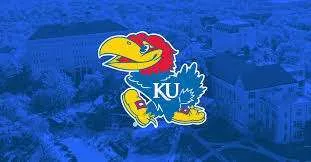Headlines
Researcher develops website featuring maps of school segregation across US to help spur research
LAWRENCE — The 2020 U.S. Census Bureau data shows that the United States population has grown more diverse and is increasingly urbanizing. Yet K-12 schools remain largely segregated. A new website developed by a University of Kansas researcher uses census and demographic data to build maps for all 50 states and the District of Columbia to explore where schools are most and least segregated to help inform discussions of how populations have shifted.
KU to lead new program supporting inter-American research on nuclear science
LAWRENCE — A University of Kansas researcher is leading a new $250,000 project, dubbed the Accelerating Research through International Network-to-Network Collaborations (AccelNet) program, designed to speed scientific discovery and prepare the next generation of U.S. researchers for multiteam international collaborations. Funded jointly by the NSF AccelNet Program and the Established Program to Stimulate Competitive Research (EPSCoR), the new AccelNet project will focus on designing and establishing a “network of networks” across the United States, Canada and Latin America to accelerate the process of tackling quantum chromodynamics challenges in nuclear physics.
Full stories below.
————————————————————————
Contact: Mike Krings, KU News Service, 785-864-8860, mkrings@ku.edu, @MikeKrings
Researcher develops website featuring maps of school segregation across US to help spur research
LAWRENCE — The 2020 U.S. Census Bureau data shows that the United States population has grown more diverse and is increasingly urbanizing. Yet K-12 schools remain largely segregated. A new website developed by a University of Kansas researcher uses census and demographic data to build maps for all 50 states and the District of Columbia to explore where schools are most and least segregated to help inform discussions of how populations have shifted.
Bryan Mann, assistant professor of educational policy & leadership studies, developed Geographies of Education as an interactive site that provides maps of the United States showing racial demographics of neighborhoods and schools across the country. The site houses maps for every state with data starting from the 2000 Census. Users can select a state and see data from that year on the left side of the map. To the right of a slidable rule is data from the 2015-2019 American Community Survey, an in-between census snapshot of data similar to those collected in the 10-year counts. 2020 Census data is being added as it becomes available. Colored dots for thousands of individual schools represent the racial isolation status of each school, and sliding the rule allows users to see how those makeups have changed.
Mann said there are also metropolitan maps under development that span more than one state.
“We want to help people explore places they live, places they want to research,” he said. “I see this as a starting point for exploring these population changes and as a way to view those changes in depth.”
Geographies of Education also houses a project featuring stand-alone maps of the U.S. that shows how racial demographics have shifted in schools across the country, as well as a map of the U.S. that shows school types. For example, users can see how many charter schools exist different locations.
The idea of the site is not simply to point out that racial segregation persists, but to help those who are curious about why it exists learn more. With that information, they can help inform policymakers who set laws and policy that guide schools to ensure that every student has the opportunity to receive an equitable education.
“My goal and my hope is people and researchers start to see these patterns and ask why these changes are happening,” Mann said. “For example, why are there so many charter schools here? Or, why have so many schools remained racially isolated? I hope people engage with these maps. Different states are experiencing diversity differently. We’re now looking at what these changes mean for schools.”
Mann has already conducted such research in his career, and the site also houses academic publications that have come from such work and will be a repository for future research as well. One example is a publication Mann co-wrote that analyzed why a section of Alabama commonly known as the Black Belt saw schools start to desegregate after the civil rights era, only to see school segregation return. Data showed economic changes, such as industry leaving the area and related factors, and population trends were among the primary reasons.
The research illustrates the unique nature of geography in education. Mann said out that every state’s map and school changes will look different. California and Mississippi will look quite different from each other, for example, and while one could make assumptions about the reasons, census data and research will hold the key to truly understanding why changes happened in a given location. Mann is working on similar research for Washington, D.C., schools.
Because schools cannot legally segregate by policy or law, future researchers can examine if causes are due to economics, an influx of immigration, urbanization or other factors.
Mann partnered with KU doctoral candidates Kenneth Ekpetere and Chen Liang and master’s student Titus Maxwell, all with the Department of Geography & Atmospheric Science, to build the site and its mapping and data-tracking capabilities. The site also features a tutorial video with Mann demonstrating how users can search maps, track changes in populations and use the tool’s maps and illustrations.
While Geographies of Education is a site dedicated to helping researchers understand American schools to inform better policy, Mann also hopes teachers and anyone interested in the schools of their communities will find the site useful.
“We want this to be a publicly available tool for anyone interested in using it,” Mann said. “If teachers are wanting to understand the populations of their schools, they can. Or if they want to help their students understand their communities, they can. I hope it helps people see these patterns in an easily accessible, easy-to-understand way.”
-30-
————————————————————————
The official university Twitter account has changed to @UnivOfKansas.
Refollow @KUNews for KU News Service stories, discoveries and experts.
Tweets by KUnews
————————————————————————
Contact: Brendan Lynch, KU News Service, 785-864-8855, blynch@ku.edu, @BrendanMLynch
KU to lead new program supporting inter-American research on nuclear science
LAWRENCE — Quarks and gluons are fundamental building blocks of all visible matter in the universe. They’re described by the theory of strong nuclear interactions: quantum chromodynamics, or QCD. But a complete grasp of how observed properties in the universe emerge from these interactions has remained elusive. Much as the understanding of atoms and their structure led to the development of very precise instruments such as atomic clocks, physicists think a better understanding of QCD will accelerate a host of breakthroughs in science and technology.
“Addressing open questions in quantum chromodynamics is a global effort, with large and ambitious international projects in the Americas, Europe and Asia,” said Daniel Tapia Takaki, associate professor of physics at the University of Kansas. “The U.S. will be home to a unique next-generation facility for QCD — the Electron-Ion Collider — and it has a strong participation in international projects such as the CERN Large Hadron Collider.”
Tapia Takaki is leading a new $250,000 project, dubbed the Accelerating Research through International Network-to-Network Collaborations (AccelNet) program, designed to speed scientific discovery and prepare the next generation of U.S. researchers for multiteam international collaborations. Funded jointly by the NSF AccelNet Program and the Established Program to Stimulate Competitive Research (EPSCoR), the new AccelNet project will support strategic links among U.S. and international research networks to leverage research and educational resources and tackle grand scientific challenges that require significant coordinated international effort.
“This design-track AccelNet project will focus on deeply fundamental questions like, ‘How did visible matter come into being, and how does it evolve? How does subatomic matter organize itself, and what phenomena emerge?’” Tapia Takaki said. “This project will focus on designing and establishing a ‘network of networks’ across the United States, Canada and Latin America to accelerate the process of tackling QCD challenges in nuclear physics. It will enable the training of students, postdoctoral researchers and early-career scientists in international multiteam nuclear physics projects that will have a strong participation of networks from this region.”
The KU researcher said these activities will promote integration of nuclear physics communities across the Americas and also serve to identify ethics norms and scientific guidelines for U.S.-led network-to-network projects in nuclear physics.
This AccelNet project will engage the domestic and international network partners around four main goals:
1. develop strategic partnerships across the various nuclear physics research networks in the Americas
2. identify needs, strengths and synergies of network partners for developing U.S.-led, large-scale nuclear science projects
3. design activities for researchers in the U.S., Canada and Latin America that will facilitate leveraging complementary resources for quantum chromodynamics research
4. enhance the training of the next generation of researchers in nuclear physics in a novel set of skills that include international multiteam experience.
Tapia Takaki will serve as the principal investigator, partnering with the following co- principal investigators: Carlos Bertulani from Texas A&M University-Commerce, Jean Delayen of Old Dominion University, Christine Aidala of the University of Michigan and Abhay Deshpande from Stony Brook University.
“We’re all very excited to design the Inter-American network of networks on QCD challenges,” Tapia Takaki said. “The design will be based on discussions and inputs from the nuclear physics community and the different network partners. It is also an honor for us at the University of Kansas to be leading the coordination of this new effort working closely with colleagues from various institutions, research centers and national laboratories.”
The new project is funded for two years starting from Sept. 1, 2021, and is expected to leverage additional resources to fully implement the program in coming years.
“To enable diverse network opportunities, the research themes will be broad, including research in theory, data analyses, high-performance computing, particle detectors and accelerator technologies, real-time event selection, as well as software and Monte Carlo simulation development,” Tapia Takaki said.
“Applications of emerging technologies, such as artificial intelligence and quantum technologies, will also be part of the coordination effort. The activities will include scientific retreats, meetings, workshops and the development of a website to facilitate coordination. The project will also design and carry out exchange and mobility programs between networks in the U.S., Canada and Latin American countries.”
-30-
————————————————————————
KU News Service
1450 Jayhawk Blvd.
Lawrence KS 66045
Phone: 785-864-3256
Fax: 785-864-3339
kunews@ku.edu
http://www.news.ku.edu
Erinn Barcomb-Peterson, director of news and media relations, ebp@ku.edu
Today’s News is a free service from the Office of Public Affairs




